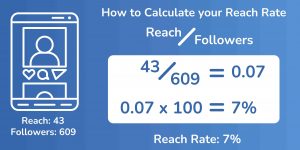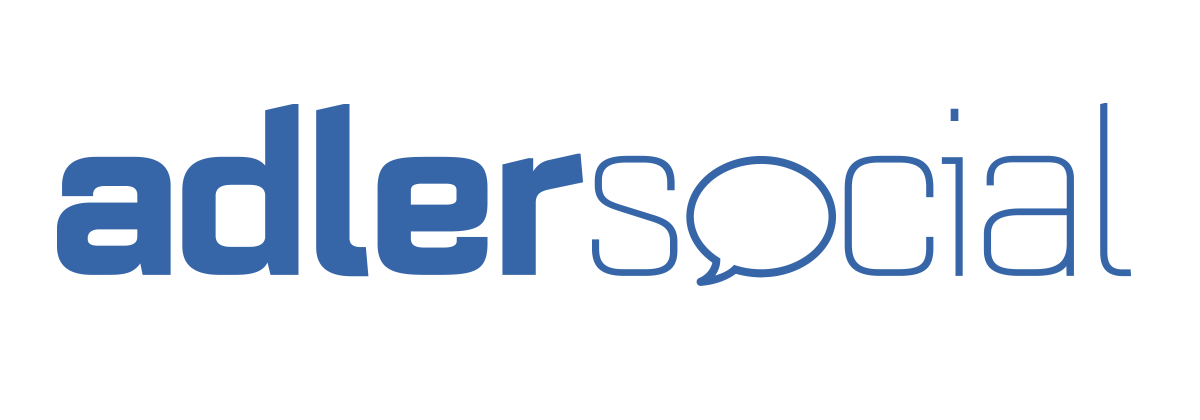
Table of Contents
1. What are Social Media Algorithms?
2. The Effect of Social Media Algorithms on Digital Marketing
3. How do Social Media Algorithms Work?
– Facebook’s Newsfeed Algorithm
– Instagram’s Feed and Stories Algorithms
– Instagram’s Explore and Reels Algorithms
– Twitter’s Timeline Algorithm
4. How to Optimize your Content for Social Media Algorithms
– Post A Variety of Different Types of Content
– Avoid Promotional-Speak and Inspire Meaningful Interactions
What are Social Media Algorithms? Have you heard of Social Media Algorithms but are not quite sure what they are or how they work?
Many businesses today, both small and large, use social media to advertise their products and services. Nearly every social media platform uses social media algorithms, and they can affect your content’s reach. That’s why, as a business owner, it is helpful to understand what social media algorithms are, the effect they have on digital marketing, how they work, and how you can optimize your content for social media algorithms. These are exactly the topics we are going to cover in this post.
Many social media platforms have billions of users worldwide. Facebook has around 2.89 billion monthly active users, Twitter has around 199 million daily active users, and Instagram has a little over 1 billion monthly active users at the moment. With this large audience comes a large amount of content. Think about how many tweets or Facebook posts are published per minute or even per second. In fact, about 6,000 tweets are published every second, which means more than 350,000 tweets are published every minute. Social media platforms use algorithms as a way to filter this content. For example, the Instagram app was first launched in 2010 and started as a chronological stream of photos, but by 2016, users were missing 70% of all their posts in their feed as more people joined. Algorithms ensure the content that each user does see is engaging and relevant to them.
What are Social Media Algorithms?
So what exactly are social media algorithms? Social media algorithms are sets of rules that assist in ranking and sorting content on a user’s social media feed. These algorithms prioritize content so each post appears in a certain order. Today, most social media algorithms sort and display content based on relevancy, recency, engagement, and the type of post.

Relevancy
Relevancy factors rank and score content that the algorithms predict will be interesting and meaningful to each user. How do they predict what is interesting and meaningful? By the user’s behavior on the platform; their relationship and past activity with other users, which people, accounts, and type of content they like and interact with, and the likelihood they will interact with each post.
Recency
Recency is the publish time factor. How recent a post was published on a social media platform can affect the order it appears in a user’s social media feed. Generally, more recent posts are more favorable.
Engagement
Engagement factors basically evaluate how popular a post is. Algorithms factor in whether or not a post has received comments, likes, retweets, shares, saves, etc., from other users who have seen the post. Not all of these engagement types are equally valuable, though. Depending on the platform, a comment may weigh more (or is more valuable) than a like, for example.
There is another type of engagement that is not so easily seen; how long a user spends on the post! If multiple users spend more than a couple of seconds on a post (reading the full caption, watching a video, etc.), this tells social media algorithms that the post is interesting and high-quality!
Type of Post
Many social media platforms like to give their users a variety of content to enjoy, so the type of post, whether a video, photo, gif, or text, can affect the order it appears in a user’s feed.
Based on these factors, social media posts can be determined “high-quality” to a user and prioritized, or they can be deemed “low-quality” and shown later in the feed or discarded, depending on the platform.
Social media algorithms use your profile information, habits, and interests to sort content in which you are likely to want to see. The algorithms sort through your existing ‘inventory’ of content (posts from people and accounts you like or follow) and prioritize the content that they have calculated would be beneficial and “high-quality” to you. That is the content you will see first, instead of simply in a chronological publish time order.

Social media algorithms aim to provide users with relevant, meaningful content while on the platform. This is why “high-quality” content appears first, while “low-quality” content appears later in the feed (even if it should appear earlier based on its publish time) or not at all. So how does this affect you as a business owner?
The Effect of Social Media Algorithms on Digital Marketing
Posting organic content on your business’s social media channels is a great way to build a community of people who are interested in your products or services, as long as the content you post is seen! You want your content to be deemed “high-quality,” engaging, and relevant to your target audience. That way, it shows up in the feeds of multiple users online. Even if a user follows your business’s Facebook page, for example, your content may not show up in their feed if it is not deemed relevant by Facebook’s algorithms. You may be thinking, ‘What! That’s not fair!’ But don’t worry. We will outline some tips later in this post so you can use social media algorithms to your advantage! Once you have an idea of how social media algorithms work, you can improve your reach. So how do social media algorithms work?
How do Social Media Algorithms Work?
Let’s first take a look at Facebook’s algorithm. Facebook’s newsfeed algorithm is a complex ranking system with multiple layers. It ranks and sorts the content for the newsfeeds of over 2 billion people in real-time. Every time you log in to Facebook, this algorithm goes to work sorting content within seconds. There have been many changes leading up to Facebook’s current algorithm, but here is a short description for you to get an idea of Facebook’s newsfeed algorithm in 2021.
Facebook’s Newsfeed Algorithm

Facebook’s newsfeed algorithm starts with each user’s inventory of available posts. The algorithm then gives each post a score depending on certain ranking measures – like the ones we mentioned above – the publish time, engagement factors, the type of post, etc. The algorithm then selects the most relevant posts and disposes of the remaining posts that the user is unlikely to interact with. The most relevant posts are then scored again based on how the algorithm predicts the user will interact with each post. For some users, a like may be more valuable than a comment or other types of engagement – depending on how they usually behave on the platform.
So for example, what is the probability of the user – let’s say, Maria, reading an article posted by an account that she often interacts with? Is it higher than the probability of Maria liking a photo that her brother just posted? Once the algorithm selects “high-quality” posts to display to Maria, it then arranges this content according to media formats (video, photo, link, etc.).
You can also read Facebook’s explanation of their algorithm here.
Instagram’s Feed and Stories Algorithms

Instagram uses a similar process. Instagram uses various algorithms for each part of the app; Feed, Explore, and Reels. Let’s look at how Instagram ranks each user’s feed. Let’s stick with Maria as our example. First, Instagram analyzes Maria’s inventory of available posts made by all of the accounts that she follows. The algorithm analyzes each post based on certain signals. Some of these signals include information about the post (how popular a post is, when it was posted, etc.), information about the publisher (how many times has Maria interacted with this person recently, etc.), Maria’s activity on Instagram (Maria’s behavior as to what posts she usually interacts with, etc.), and more. Next, Instagram’s feed algorithm makes predictions as to how Maria will interact with each post.
There are many actions that Maria can take to interact with a post, such as liking it, commenting on it, and saving it. Instagram weighs these actions differently, so the more likely Maria is to take an action on a certain post, and the more heavily Instagram weighs that action, the higher up the post will be in her feed.
For example, Instagram’s Feed algorithm weighs saving, and commenting on a post heavier than liking a post. (Maybe because they take a little more effort!). So let’s say there are two posts that Instagram’s algorithm is analyzing. One of the posts is a photo by Maria’s friend, Jack. The other post is a video by her sister, Anne. If Instagram’s algorithm predicts that Maria is likely to like Jack’s photo and is likely to comment on Anne’s video, Instagram will most likely show Anne’s video first (depending on other factors of the algorithm as well, such as the time each post was published, etc.)
Instagram’s Explore and Reels Algorithms

With all of this in mind, it is important to know that Instagram ranks Feeds and Stories differently from Reels or the Explore part of the app.
“Over the years we’ve learned that Feed and Stories are places where people want to see content from their friends, family, and those they are closest to. […] Explore was designed to help you discover new things. […] Reels is designed to entertain you. Much like Explore, the majority of what you see [in Reels] is from accounts you don’t follow.”
In Explore, signals showing how popular a post is (how many likes, comments, and shares a post receives) matter more than they do in Feed or Stories.
In Reels, the user’s past activity is very important to the algorithm. It analyzes which reels the user has engaged with recently.
Since most of what people see in Reels is from accounts they don’t follow, this can be the perfect opportunity for users to discover your business, but we’ll get more into that later!
You can also read more about Instagram’s algorithms here.
Twitter’s Timeline Algorithm

Now let’s get into Twitter’s timeline algorithm! First, Twitter’s algorithm gathers all of the tweets posted since Maria’s last log-in from all of the accounts that she follows. The algorithm then scores each of these tweets based on how relevant they are to Maria. The highest scoring tweets appear at the top of Maria’s timeline, while the remaining – lower-scoring – tweets appear below. Say Maria has not logged into her Twitter account in quite some time. There may be a large number of tweets for her to go through. In 2017, Twitter introduced an “In case you missed it” module. The “In case you missed it” module will appear in situations like this, where there are many available tweets. This module will then show a small selection of these tweets based on their relevancy score. How does Twitter rank relevant tweets for each user?
Twitter’s timeline algorithm would rank relevant tweets for Maria based on the tweet’s recency (when it was posted), the type of media in the tweet (If it has an image or video), the engagement of the tweet (the total number of retweets or likes), Maria’s relationship with the publisher, and Maria’s past activity on Twitter.
You can read more about Twitter’s timeline algorithm here!
So how can you make sure that Maria sees a post made by your small business? Here are a couple of tips!
How to Optimize your Content for Social Media Algorithms

Are you worried that your social media content is not being seen by as many users as possible? Before we dive into some tips that you can do to improve your reach, let’s talk about an average organic reach on popular social media channels so you can see where your business stands.

Reach Rate: The number of people who saw your post divided by your amount of followers or page likes.
The average organic reach rate on Facebook can vary but sits somewhere between 2.2% and 7%, and on Instagram, it is about 9.4%. Is your business hitting these averages? If not, start to improve your reach with these tips!
First, consider the factors we mentioned above; recency, engagement, post type, and relevancy. You can tap into each of these factors to optimize your content for social media algorithms to improve your reach.
Post Consistently

Most social media algorithms (on Facebook, Twitter, Instagram, etc.) factor in recency when sorting content. This means your business should always have new content to show to your audience. Algorithms tend to favor accounts that post consistently over accounts that post now and then. Suppose you post sporadically and, let’s say, Maria logs into one of her social media accounts. In that case, your content may not be recent enough for it to be relevant and “high-quality” to Maria. Posting content daily is a good rule of thumb to optimize for social media algorithms.
Invite Engagement

Social media algorithms look for “high-quality” posts to show each user. One of the ways they search is by analyzing the engagement on each post in the user’s feed. If other people like, comment on, retweet, or share a certain post, maybe that user, Maria, will too. Remember how we mentioned that Instagram’s algorithms usually weigh comments heavier? Here are some simple ways to invite engagement and comments when posting content!
1. Ask questions! Give users a reason to comment on your post by asking them an inviting question in your caption.
2. If your post receives a comment, answer it! Interacting with your audience invites them to continue engaging with your content.
3. Post at the right time! You want your content to be seen by as many people as possible. This will increase the chances that your post will receive engagement. We will be uploading future blogs going into more detail about when you should post on different social media platforms and how often. Keep an eye out for them!
4. Develop some of your content based on engagement. Use your knowledge of your industry to your advantage! Try Q&A-type posts, Q&A live videos, and other types of engaging content, such as polls.
Looking for more ways to increase engagement? Make sure to take advantage of stories! Creating Facebook and Instagram Stories is a great way to interact with your customers! You can create many different types of engaging content. For example, with Instagram Stories, there are different stickers you can use to create polls, questions, and even add links.
Post a Variety of Different Types of Content

Social media algorithms like to give their users various types of content to keep them interested. One way to ensure your content is shown to as many users as possible is to post varying media types such as photos, videos, links, gifs, etc.
Remember how we mentioned that Instagram Reels could be the perfect opportunity for users to discover your business? Give them a try! Short video content is booming nowadays with the rise of TikTok, and because of this, Instagram wants its users to create this type of content. Instagram Reels also offer an enormous reach, so new people can discover your content and your business!
Posting video content on your Instagram Feed along with other types of content such as carousel posts (posts with multiple photos or videos) is also a great way to improve your reach. How long a user spends on a post is important to social media algorithms! These types of content are likely to keep users interested for a longer amount of time, as they may spend more time watching your full video or swiping through your carousel posts.
Rise above social media algorithms by varying your content!
Avoid Promotional-Speak and Inspire Meaningful Interactions

Remember how we mentioned that many social media algorithms rank posts based on the user’s relationship with the publisher? Today, many social media platforms are trying to provide their users with meaningful interactions by showing them posts created by their friends and family. This can mean that promotional content posted by business accounts or pages can be ranked lower in social media algorithms. Take one of Facebook’s recent algorithm changes announced in 2018 for example,
“With this update, we will also prioritize posts that spark conversations and meaningful interactions between people. To do this, we will predict which posts you might want to interact with your friends about and show these posts higher in feed. These are posts that inspire back-and-forth discussion in the comments and posts that you might want to share and react to. […]
We will also prioritize posts from friends and family over public content, consistent with our News Feed values. […] Because space in News Feed is limited, showing more posts from friends and family and updates that spark conversation means we’ll show less public content, including videos and other posts from publishers or businesses.”
So how can your business compete with your audience’s friends and family online? How can you use this aspect of social media algorithms to your advantage? Inspire meaningful interactions with your audience! Try to connect with your audience personally by posting content that inspires conversation and avoid promotional-speak such as “BUY NOW” captions. In layman’s terms, keep it real!
Are you now ready to tackle social media algorithms? Now that you know more about social media algorithms, are you worried that you don’t have the time to create optimized content? We get it. You’re busy handling every other aspect of your small business! Our experts are here to help you. At Adler Social, we specialize in organic social media marketing. Learn more about us and how we can help your business by scheduling a FREE demo on our home page!
Katelyn Huras









